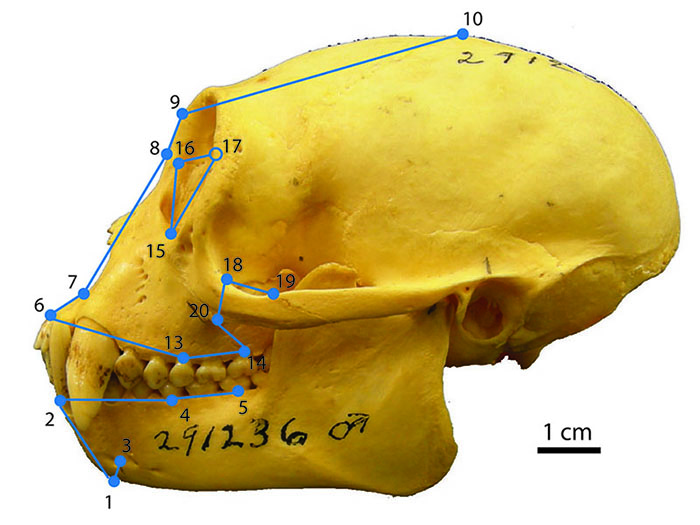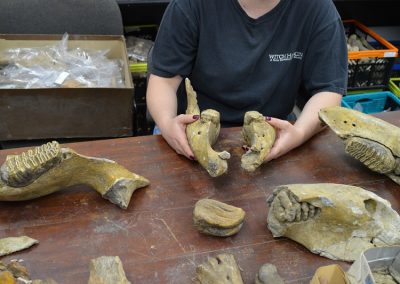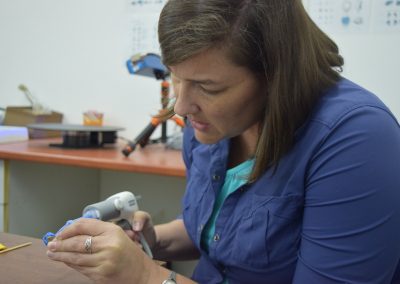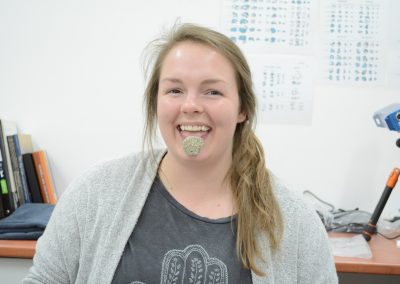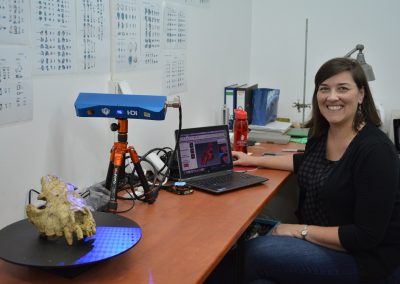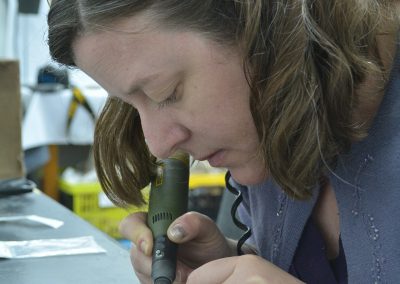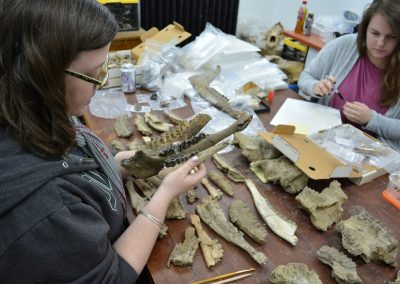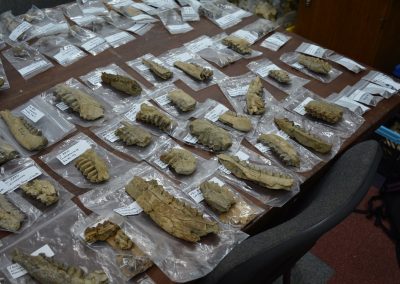Fossils were in no short supply during our recent research trip to the “Emil Racovita” Institute of Speleology in Bucharest, Romania. Our goal this season was to work on continuing to inventory the existing Olteţ River Valley paleontological collections. Excavations in the 1960s recovered thousand of fossils from multiple sites in the Olteţ River Valley dating to the early Pleistocene, around 1.5 to 2 million years ago. By examining the fossils from these sites we can understand the paleoenvironments that our early human ancestors might have encountered when they first dispersed into Europe. To do this we cataloged specimens, collected detailed measurements, created 3D models of some specimens, collected isotopic samples from teeth, and molded teeth to analyze their microwear. Both isotopic and microwear analyses can tell us about the foods a fossil animal ate, which in turn can tell us about the environment where they lived. Unlike today, environments in Romania 2 million years ago included species like giraffes, rhinos, mammoths, primates, giant deer, hyenas, and even saber-tooth cats!
Check out the pictures below and for more information on this ongoing research visit our Olteţ River Valley research page!
